The First Floor
With the build of the spinning frames now well underway on the third floor, we’ve turned our attention to the first, which will be an integral part of our cotton manufacturing processes.



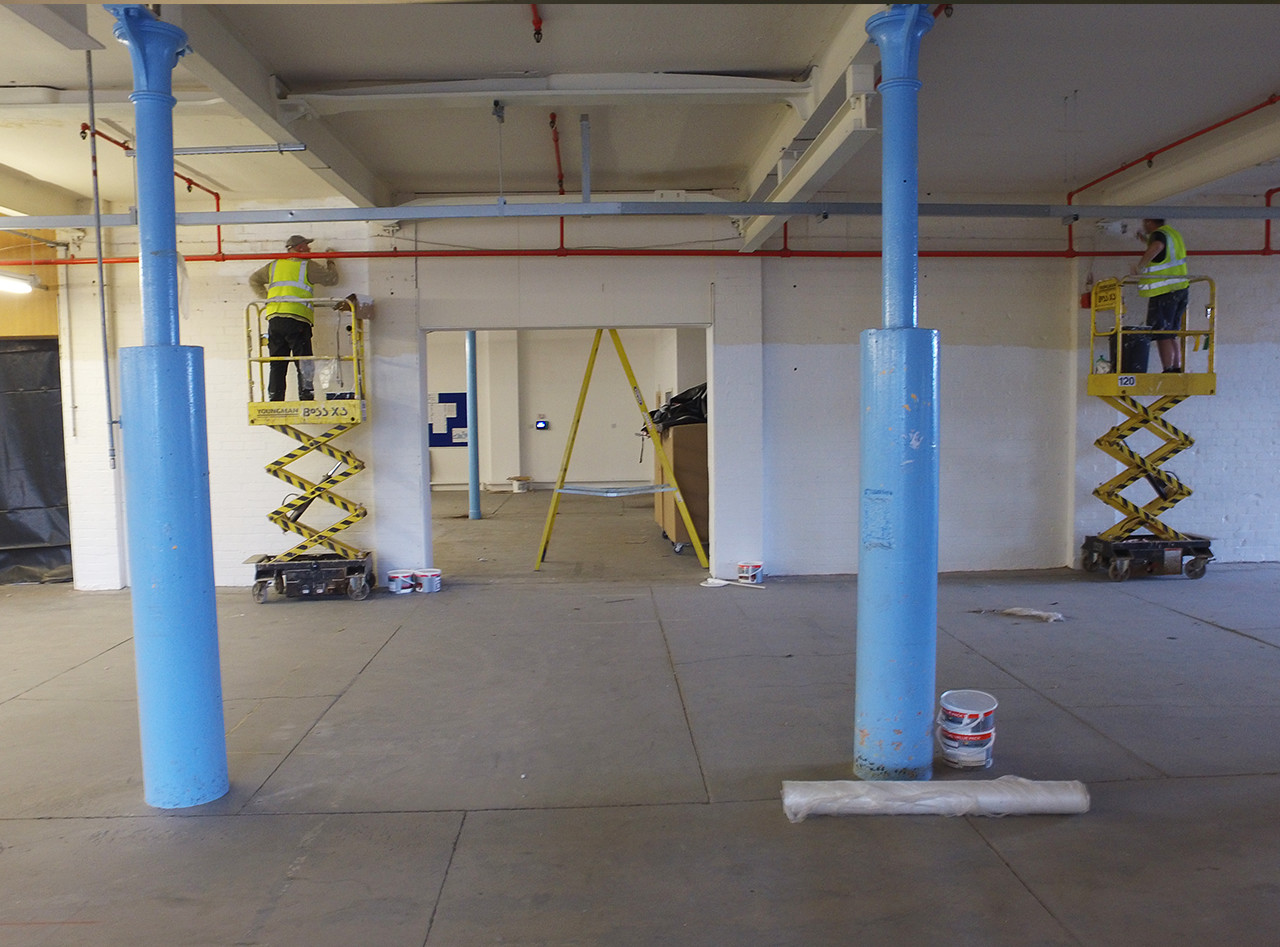
This is where the cotton will be sent from the ground floor in sliver cans where it will have been cleaned, opened and combed. When it arrives, it will to be put on our roving machines – also known as a speed frame – and drafted on to bobbins before being sent to the third floor for spinning.

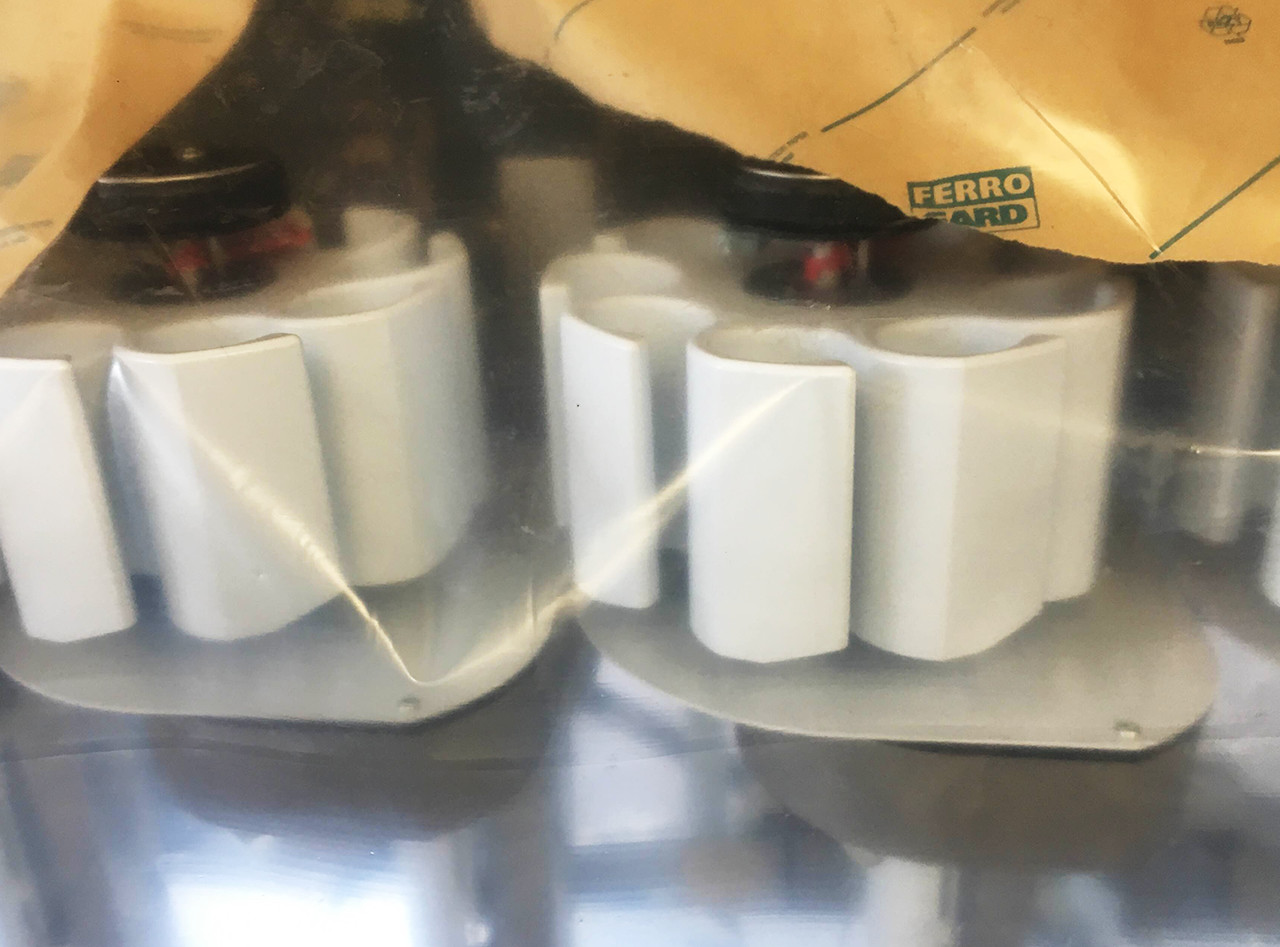
After it has been spun, the cotton yarn will come back down again, this time to the cop-to-cone winder, a highly intelligent computerised machine which runs a detailed analysis of the cotton yarn as it’s winding – which is a crucial part of our quality control system.
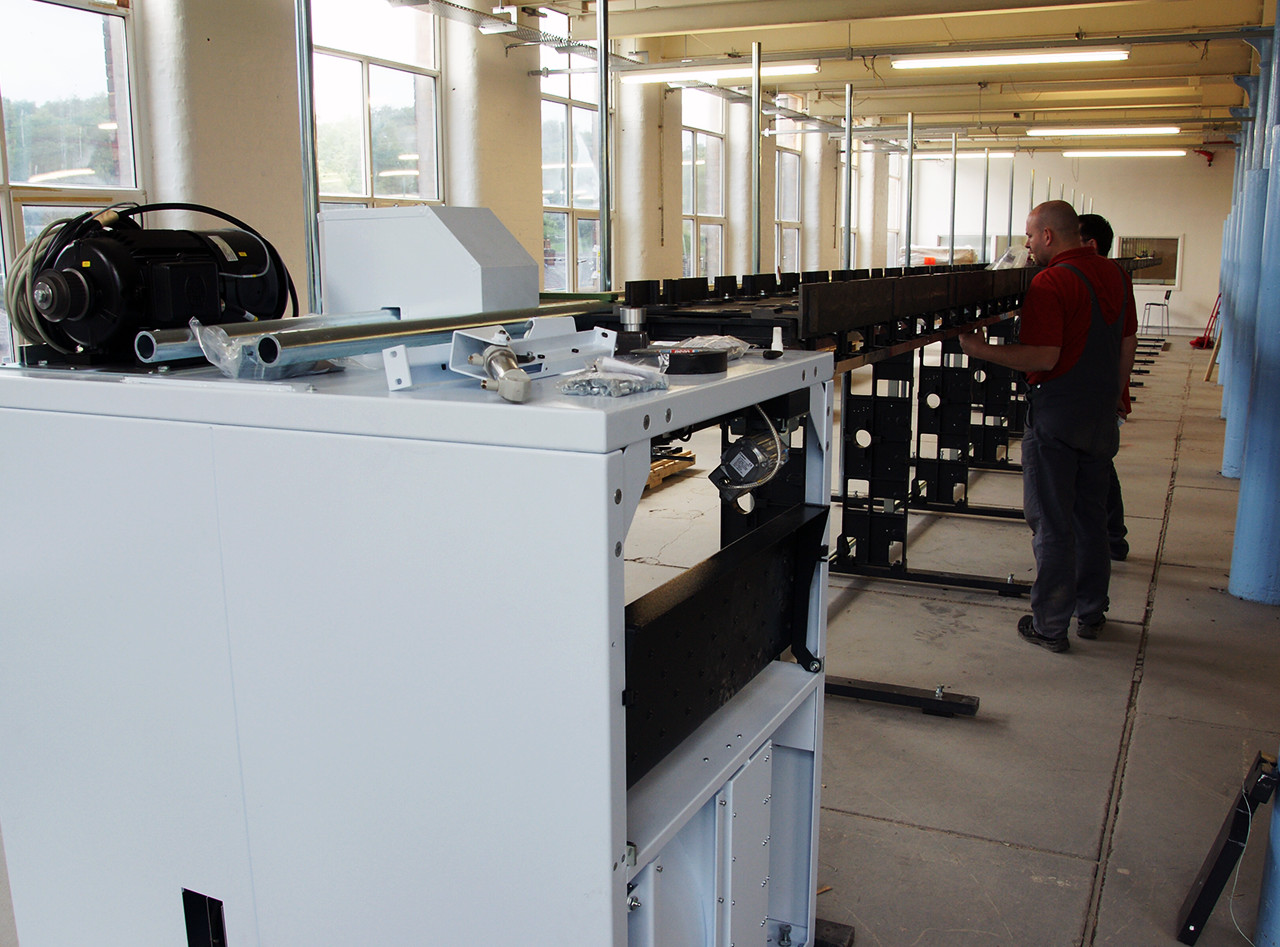
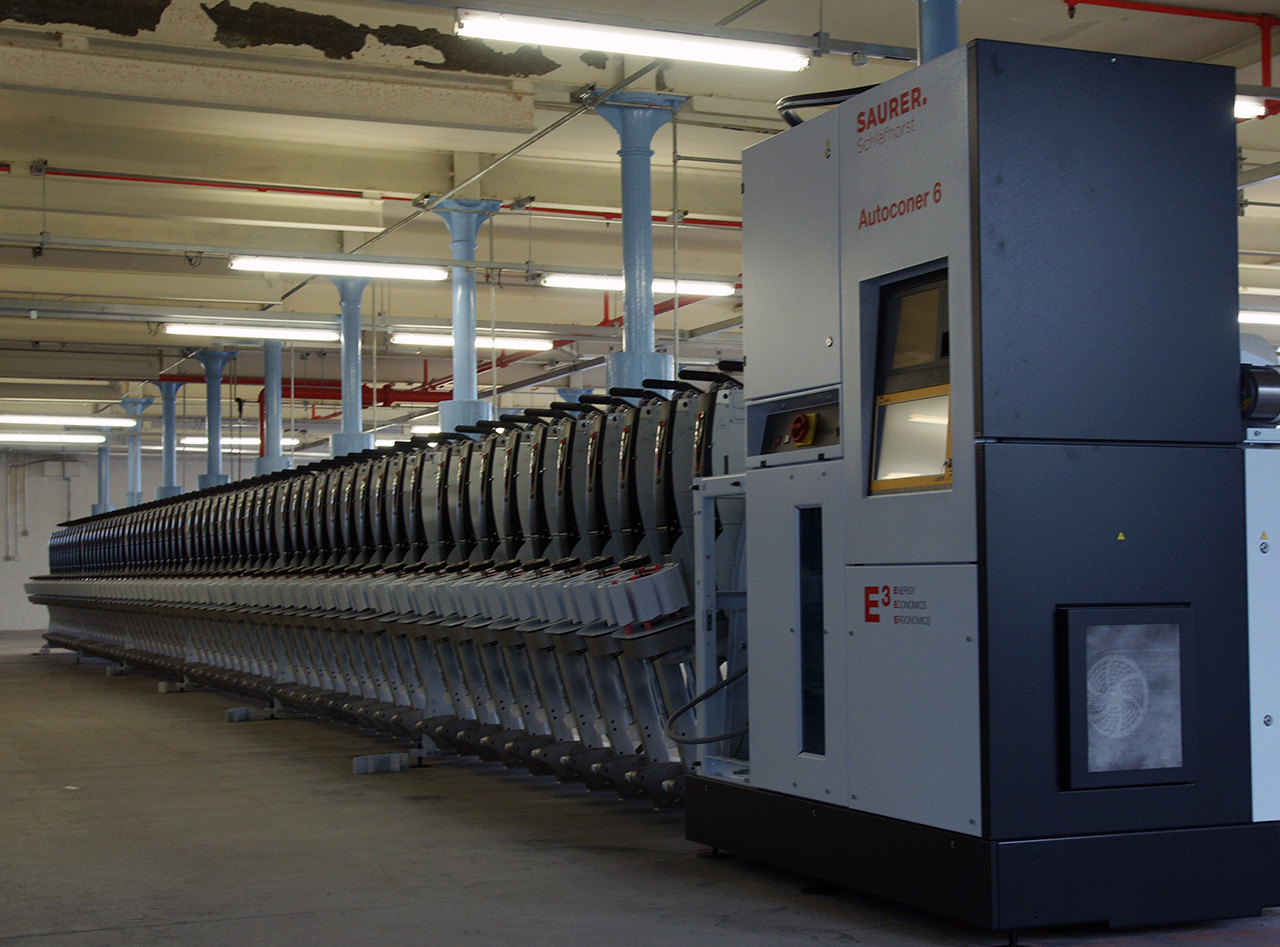
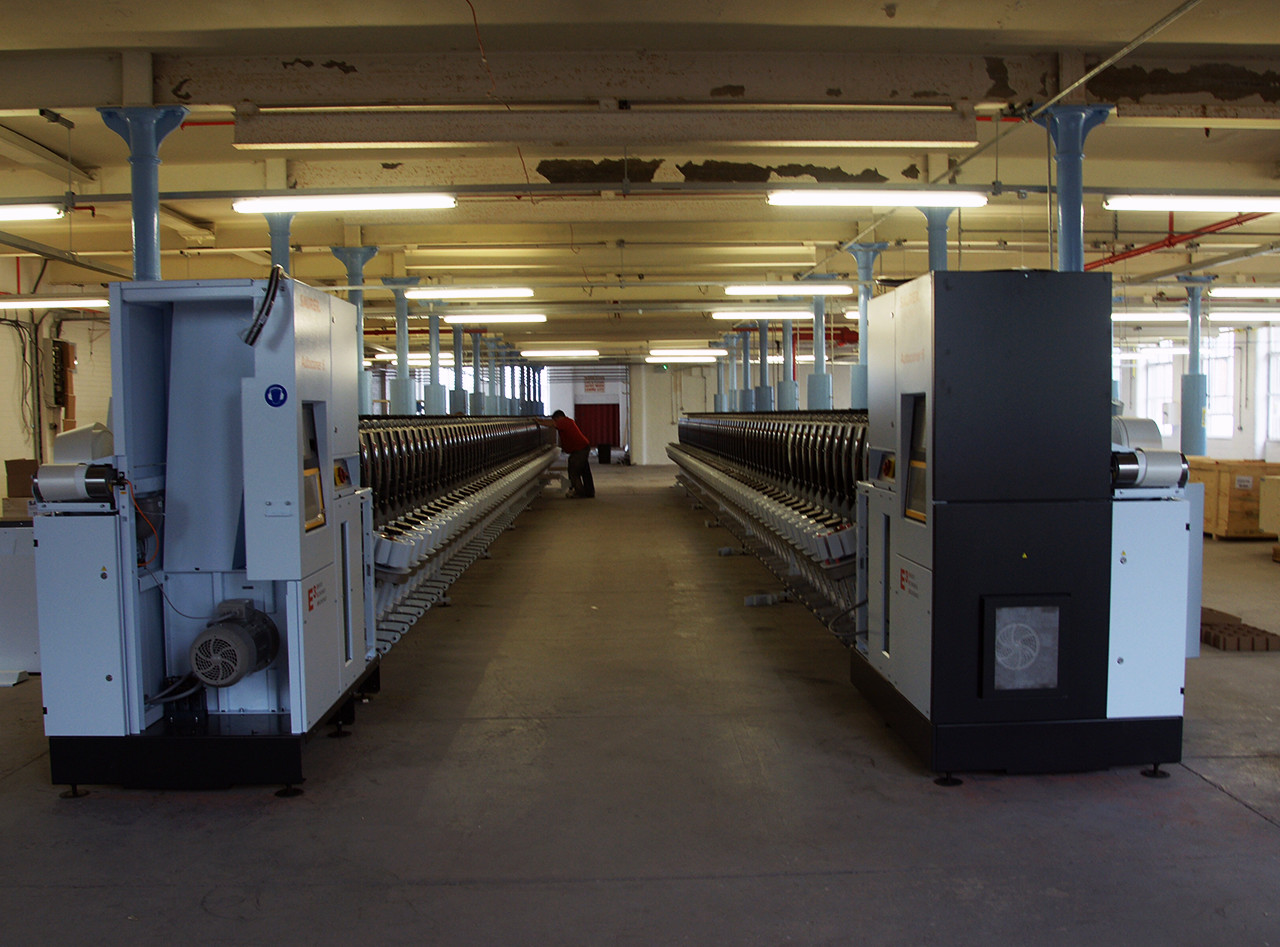
The Auto-coner will give us information on the fly about the thickness of the yarn and be able to alert us to thin patches and record data on hairiness and Nep (small patches of unopened fibre that make the yarn appear slubby or lumpy which would show up in fine woven fabrics) – and all this whilst winding up to 1,200 metres of cotton a minute.
The machine’s automatic splicing system will cut out any offending pieces and join it back together with the help of a robotic arm.
After this, the cotton then heads to the next part of the process, either to the auto-clave for steaming or for plied yarns, onto the assembly winder before going on for doubling.
